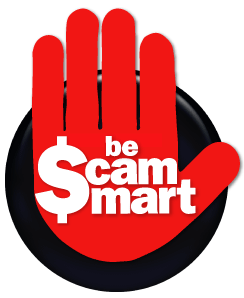]]>
Unless you live in a cave –and one without a computer at that– you’re very familiar with the huge time waster that sifting through mountains of email spam can be. And while spam is a huge annoyance for employees and end users everywhere, the real costs for businesses are in time and money and they’re increasing every day. As costs rise, IT people (at SMEs in particular) are desperate for ways to deal with it effectively.
It’s estimated that 100 billion spam emails fly back and forth, dirtying up the internet every day. A lot of these emails end up on in business email boxes, and employees are forced to spend their mornings sifting through mountainous piles of spam. All of which is time they’re spending not working.
The Good, the Bad, and the Ugly of Spam Filters
Installing anti-spam filters is really the only effective way to deal with day-to-day spam within a company. These filters work to separate the wheat from the chaff, so to speak, allowing the good emails through and tossing the junk in the trash. They do this by combining several different types of technology and updating almost constantly. And while the highest quality spam filters do provide relief, sifting out about 98% of a company’s spam, they’re still imperfect.
Why? Unfortunately, spam filters occasionally have trouble telling what is wheat and what is chaff (to stretch an already-tired metaphor), and toss some important emails out along with the junk. And while they don’t occur that often, ‘false positives’ can still become a problem for business owners.
One solution to the problem of false positive is adjusting the sensitivity of the company’s spam filters. The way this works is simple: the higher the sensitivity, the more spam is caught. But the higher the sensitivity, the more valid emails will be taken out with the trash. Increasing the sensitivity of spam filters can cost companies a heck of a lot more money than too much spam after all, customers don’t like it when their emails go ignored.
The Direct and Indirect Cost of Anti-Spam Filters
Even one little missed email can get a company in deep water. A law company based out of Colorado, for example, missed an email containing some important information about a court date and ended up missing an important day in court. The cost? They were required to pay all of the fees for the opposing counsel.
How did this happen? To combat spam, the company’s IT department had turned up the sensitivity of their email filters. Apparently, the United States District sounded pretty spammy to these super hyper filters, and it costed this company thousands of dollars in fees. Ouch.
While this is a nice and obvious example of how false positives can lose a company money, in most cases it’s simply not that cut and dried. Most monetary losses aren’t direct; they come from a loss of business and credibility. When an email from a client is gobbled up by the spam filter and a big business deal falls through because the client feels ignored, it takes a lot of work and public relations to get that client back. And sometimes it never happens.
In addition to directly losing a company money, false positives can affect productivity just as much as an overload of spam can. If employees are used to seeing a lot of their important emails get junked, they will have to spend valuable time sifting through their spam folder for genuine emails. How much can that cost? More than you’d think. According to Ferris Research, recovering a genuine email from a spam folder costs an average of $3.50 of that employee’s time. Especially if you don’t experience many false positives, it may not seem like much but in a company of 500 people who have to fish out two emails from their spam folder a month, it adds up to $42,000. Does that sound like an itty-bitty expense to you?
It doesn’t to most other business owners, either. And to reduce the number of false positives –and the amount of business lost– many businesses don’t use any anti-spam filters at all. And while it’s hard to judge them for wanting to prevent a loss of business, going without a spam filter opens them up to all sorts of problems. Taking care of spam is just too important.
Striking a Balance
But how do you deal with spam and reduce false positives at the same time? The best method is to set aside all mail marked as spam into a special folder so that users will have access to it, and can check it often. While this may seem time-consuming, with good anti-spam software it really doesn’t have to be. The better the software is at recognizing obvious spam, the fewer emails will end up in the junk folder.
As spam filters improve, so do spammers. Because of this, spam filters will probably never be 100% effective– the ones that will delete every piece of spam will generally delete a few important emails along with it. And the ones that let all the important stuff though will also let in a bit of junk. But using a good, well-configured anti spam software and integrating it with your email server can really reduce the amount of spam that end users receive, as well as the rate of false positives you experience.







